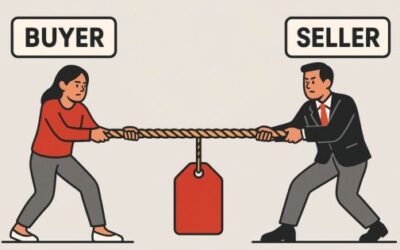Why Focusing on Problems vs Outcomes, Drives Sales Success
The Dangers of Outcome Selling
If you’ve been tuning in to the Gap Sell Keenans for a while, you’ve surely notice how much Keenan loves to ask, “So what’s the problem you solve?” If you’re already a Gap Seller, you should have the answer to this question, because, come on, you’ve filled out your Problem Identification Chart, right?! If you haven’t yet or you’re new here, let me clue you in on an important mistake. One common trend among participants – they often skip straight to talking about the outcomes they help companies achieve. You know, stuff like “we help companies grow their revenue” or “we help clients achieve this objective”. Now stop. This is a result of the solution, this is not a problem!
Problems Vs Outcomes
It seems like there’s this widespread belief that the “problems” we solve are the outcomes we achieve and that we should spend our time “pitching” these outcomes rather than the actual problems we solve. But, this is a risky move. Why? Well, because when we solely sell or solely focus on outcomes it can be a struggle for a customer to connect with them. It’s like we’re stuck in this fantasy land future state where everything is sunshine and rainbows and everyone can achieve these outcomes. Meanwhile our customer’s are still stuck in their current reality like your speaking two different languages.
Outcomes might look amazing on paper and sound impressive, but outcomes and percentage improvements always sounds great and everyone uses them. Flip it, get me thinking about where I am now, anchor me in my problem. Once we’re on the same page there’s a good chance I’ll see that you understand my struggles and I’ll open up about what is going on in this world.
We help companies struggling with…
Instead of just presenting the outcomes you achieve as the problems you solve, let’s flip it. Take that outcome and reverse it – instead of saying, “we help companies achieve X% revenue growth” or “we improve efficiency by X%,” try this: “We help companies who are finding it hard to grow their revenue” or “we assist companies that have noticed a decline in efficiency within their teams.” By doing so, you’re grounding the client in their own problem, making them think, “Hey, that’s exactly what I’m going through!”
And you know what? This isn’t just something sales should be aware of. Marketers, pay attention. You need to follow similar paths with your messaging. It’s crucial to focus on the actual problems your audience is facing, rather than solely highlighting the outcomes.
Ask questions that guide the conversation toward the problems
Alright, now that you’ve got a handle on the problems you solve, it’s time to put them to work in your sales conversations. And here’s the deal: process questions play a vital role in these conversations but you have got to ensure they’re leading you somewhere meaningful. Process questions are just a steppingstone, a means to an end. What really matters is have a game plan for how you are going to use your process questions to get to the heart of the problem. Don’t let your process questions wander aimlessly. Give them purpose, direction, and intention.
Ready to be a sales badass? Grab a copy of Gap Selling and let’s get to work.



0 Comments